#kate summerscale
Text
"THE SUSPICIONS OF MR. WHICHER: THE MURDER ON ANGEL LANE" (2013) Review

"THE SUSPICIONS OF MR. WHICHER: THE MURDER ON ANGEL LANE" (2013) Review
Over a decade ago, the ITV network aired a television adaptation of Kate Summerscale's 2008 true life crime book, "The Suspicions of Mr. Whicher or The Murder at Road Hill House", starring Paddy Considine. The movie proved to be such a success that producer Mark Redhead had followed up with three other television productions featuring the main character, Jack Whicher. The first of these sequels was 2013's "THE SUSPICIONS OF MR. WHICHER: THE MURDER ON ANGEL LANE".
The 2013 television movie began with Jack Whicher coming to the aid of a wealthy middle-age woman, when a young thief snatches her purse inside a London pub in London. After retrieving her purse, Whicher discovers that the woman, Susan Spencer, is searching for her missing niece, a 16 year-old girl named Mary Drew. Miss Spencer learns of Whicher's old position as a police detective and hires him to find the missing girl. Whicher eventually discovers Mary's brutally murdered body inside the police morgue. Both eventually learn that before her death, Mary had given birth to a child and someone had stolen a family heirloom from her. Miss Spencer hires Whicher to act as her private consultant and find Mary's killer.
When I first saw "THE MURDER ON ANGEL LANE", I had assumed the story began sometime after the events of 2011's "THE SUSPICIONS OF MR. WHICHER: THE MURDER AT ROAD HOUSE HILL". It took a rewatch of this second television movie for me to realize that it was set during the events of the 2011 movie - sometime between the four or five years between Mr. Whicher's failure to get the killer prosecuted for murder and the latter's eventual confession. I was able to ascertain this conclusion, due to the hostile behavior of Police Commissioner Richard Mayne toward Whicher and the one of the supporting character's comments. This setting also explained Whicher's occasional doubts regarding his skills as a detective. Now whether the other two Whicher television movies that followed were also set during this period is a matter I will eventually discover.
Unlike "THE MURDER AT ROAD HOUSE HILL", "THE MURDER ON ANGEL LANE" proved to be a genuine "whodunnit" story. This particular case was not some true crime narrative. And Whicher did not discover the antagonist's identity until the finale act. I am not saying that this particular difference made the 2013 television movie an improvement over the first one. But in a way, it felt a little refreshing to view a murder mystery/period drama, instead of a mere true life case set in the far past. "THE MURDER ON ANGEL LANE" started as an investigation into the disappearance of a well-born adolescent managed to transform into a lot more. Like "THE MURDER AT ROAD HOUSE HILL", this story also proved to be a family drama beset with murder, betrayal and corruption. But unlike the 2011 movie, greed also play a major role in "THE MURDER ON ANGEL LANE". I thought screenwriter Neil McKay and director Christopher Menaul handled the movie's narrative very well, with a minor exception or two. I also admired how McKay used the unresolved events of THE MURDER AT ROAD HOUSE HILL" to not only provide the Whicher character as an emotional obstacle for him to overcome, but also an excuse to place him in the dangerous situation that he found himself in the movie's final act.
I do have a few complaints about the plot for "THE MURDER IN ANGEL LANE". And it centers around a small group of quibbles regarding the television movie's final act. Whicher's investigation led him to a third visit at an insane asylum, where he found himself incarcerated as a patient. A part of me felt relieved that this particular scenario lasted less than five minutes. However, another part of me found this sequence rushed and contrived for it did not take Whicher long to receive help in making his escape. Following on the heels of the asylum sequence, Whicher finally confronted the murderer. But he did so alone . . . and without contacting his old friend, Chief Inspector Adolphus "Dolly" Williamson or other members of the Metropolitan Police. I understand why Neil McKay had written the confrontation scene this way. I simply found it implausible and wish he could have created another way to close the case.
I certainly had no complaints about the movie's production values. David Roger returned to the "MR. WHICHER" series to serve as production designer. As he did for "THE MURDER AT ROAD HOUSE HILL", Roger managed to re-create the look and style of early 1860s Britain with the additional work of Paul Ghirardani's art direction and the set decorations of Jo Kornstein, who had also worked on the "ROAD HOUSE HILL" production. Only in this production, his vision extended to the streets of London. Tim Palmer served as the film's cinematographer. I thought he did a solid job, but his work did not exactly blow my mind. Lucinda Wright also returned to serve as the movie's costume designer. As she did for the 2011 television movie, her work for "THE MURDER ON ANGEL LANE" perfectly recaptured the early-to-mid 1860s without being either shoddy or over-the-top.
Paddy Considine returned to reprise his role as Jack Whicher. As he had done in the first movie, the actor did an excellent job of quietly capturing the character's reserve nature, intelligence and skill for criminal investigation. However, Considine managed to add an extra touch of poignancy, as he project Whicher's occasional bouts of insecurity in the wake over the Road House Hill case and his minor failures during his investigation of this case. Both William Beck and Tim Piggott-Smith reprised their roles as "Dolly" Williamson and Commissioner Mayne from from the first film. Like Considine, both actors gave first-rate performances. And both added extra touches to their performances - especially in their characters' attitudes toward Whicher - in the wake of the Road House Hill debacle. Olivia Colman provided the movie's emotional center as the well-born Susan Spencer, who hired Whicher to first, find her niece Mary Drew and later, find the latter's killer. She and Considine, who had co-starred in the 2007 comedy, "HOT FUZZ", worked very well together. Shaun Dingwall gave a very subtle performance as Inspector George Lock, the main investigator of Mary's murder and the only one willing to give him a chance in helping the police. The television movie also featured solid performances from Mark Bazeley, Alistair Petrie, Billy Postlewaite, Angela Terence, Justine Mitchell, Sean Baker, Sam Barnard, Christopher Harper and Paul Longely.
Of the four "MR. WHICHER" television movies, I must admit that "THE SUSPICIONS OF MR. WHICHER: THE MURDER ON ANGEL LANE" is my least favorite. I believe the last fifteen to twenty minutes had been marred by some contrived writing that I believe had rushed the narrative's pacing. However, I still believe it was a first-rate production in which screenwriter Neil McKay had created an intriguing whodunnit involving a major family feud, betrayal and greed. And director Christopher Menaul, along with a talented cast led by Paddy Considine had skillfully conveyed McKay's story to the screen.
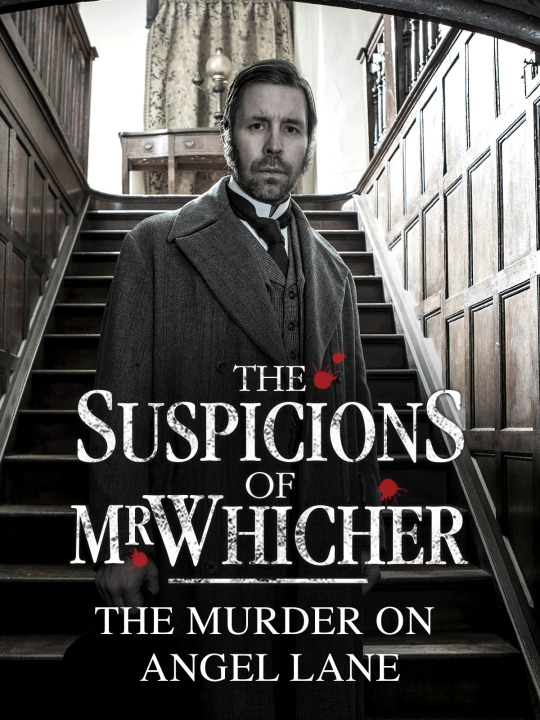
#kate summerscale#neil mckay#christopher menaul#jack whicher#the suspicions of mr. whicher#the suspicions of mr. whicher: the murder on angel lane#paddy considine#olivia colman#william beck#shaun dingwall#alistair petrie#victorian age#tim piggott-smith#justin edwards#billy postlethwaite#siobahn o'neill#mark bazeley#angela terence#justine mitchell#sean baker#sam bernard#christine harper#paul longely#road house hill#costume drama#period drama#period dramas
2 notes
·
View notes
Text
“But a wish had taken hold of her, and she was to find it hard to shake.”
Mrs. Robinson's Disgrace, The Private Diary of a Victorian Lady (2012), Kate Summerscale
#mrs. robinson#mrs. robinson's diary#kate summerscale#authors#literature#english literature#currently reading#book diary#booklr#book blog#quotes#spilled ink#dark academia#victorian
7 notes
·
View notes
Text
All the suspects in a classic murder mystery have secrets, and to keep them they lie, dissemble, evade the interrogations of the investigator. Everyone seems guilty because everyone has something to hide. For most of them, though, the secret is not murder. This is the trick on which detective fiction turns.
The danger, in a real murder case, was that the detective might fail to solve the crime he had been sent to investigate. He might instead get lost in the tangle of the past, mired in the mess he had dug up.
The Suspicions of Mr Whicher, or the Murder at Road Hill House, by Kate Summerscale
4 notes
·
View notes
Text

I brought 4 books with me to read in 7(ish) days.
.
1 down, 3 more to go!
.
‘The Haunting of Alma Fielding: A True Ghost Story’ by Kate Summerscale
.
This book made me join my local library so that I could take it out.
.
✨📖✨
.
Photo taken: 11/08/2022
.
.
.
.
.
#Books #Reading #thehauntingofalmafielding #attrueghoststory #katesummerscale #summer #august #instagram #photographs #2022 #readingchallenge2022
#books#reading#instagram#photographs#August#summer#2022#the haunting of alma fielding#Kate summerscale#Ibiza
4 notes
·
View notes
Text
Kate Summerscale – Fobiler ve Maniler Kitabı (2023)
Homofobi gibi bildiğimiz fobilerden insanı şaşırtan yumurta, saç, sessizlik korkularına, hatta her şeyden (pantofobi) korkmaya dek uzanan çok sayıda fobi mevcut.
Anlamlandıramadığımız mani ve fobilerimizin arkasında ne yatıyor?
Bizi pençesine almış bu takıntılardan kurtulmanın bir yolu yok mudur?
Peki, dünyada bunları bir tek biz mi yaşıyoruz?
Kate Summerscale, ‘Fobiler ve Maniler Kitabı: A’dan…
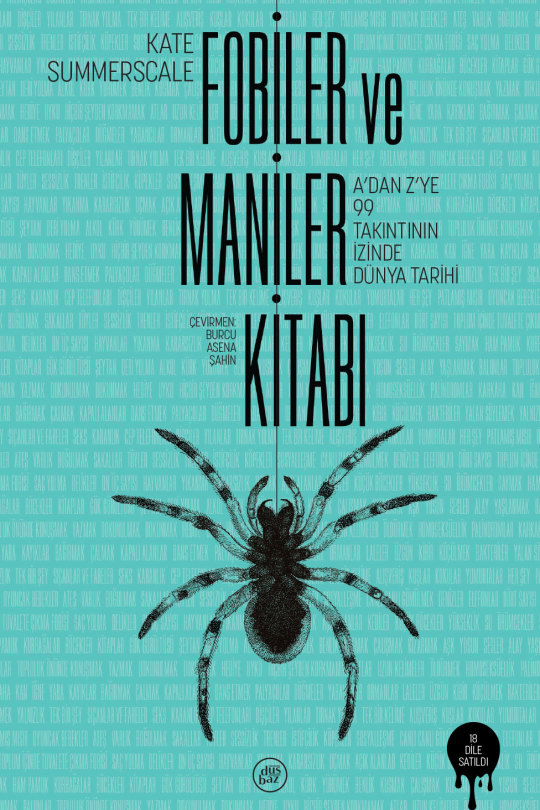
View On WordPress
#A’dan Z’ye 99 Takıntının İzinde Dünya Tarihi#Burcu Asena Şahin#Düşbaz Kitaplar#Fobiler ve Maniler Kitabı#Kate Summerscale
0 notes
Quote
If she rid herself of all her anxieties and nervous habits, she wondered if there would be anything of her left.
Kate Summerscale, The Book of Phobias & Manias
1 note
·
View note
Text
I’ve been reading through The book of phobias and manias, a history is obsession by Kate Summerscale and I couldn’t help but transfer that over to Linked Universe.
So, here’s a list of the phobias I think the boys would have 👍
Time: Arachnophobia (spiders)
Twilight: Pyrophobia (fire)
Wild: Athazaphobia (forgetting)
Wind: Ornithophobia (birds)
Legend: Hypnophobia (sleep)
Hyrule: Claustrophobia (tight spaces)
Four: Monophobia (solitude)
Warriors: Proditiophobia (betrayal)
Sky: Hippophobia (horses)
#7.2 percent of people develop a phobia at some point in their life#and they’re about to raise the average#I might make a post about manias too but idk#linked universe#lu time#Lu Twilight#Lu Legend#Lu Wild#Lu Wind#Lu Warriors#Lu sky#Lu Hyrule#lu four#legend of zelda
358 notes
·
View notes
Text
2024 TBR Pile of Good Intentions
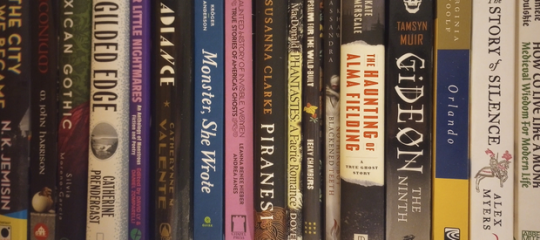
(crossposted to Patreon)
This year’s TBR pile looks very much like last year’s (hence the reused banner image) but last year was also a shitshow so I’m giving myself a do-over. Although looking back, I did actually manage to read two (2) of the books on last year’s list! I even wrote about How to Live Like a Monk for my patrons! The other one was Mexican Gothic… Y’know, I should really write about Mexican Gothic…
Lion’s Paw Reads: (aka books I’m planning to do patron content about)
Orlando, by Virginia Woolf
A Haunted History of Invisible Women: True Stories of America’s Ghosts, by Leanna Renee Hieber and Andrea Janes
The Haunting of Alma Fielding, by Kate Summerscale
The Octagon House: A Home for All, by Orson Squire Fowler
Other Reads (Fiction):
Our Wives Under the Sea, by Julia Armfield
The Ladies of Grace Adieu and Other Stories, by Susana Clarke
Radiance, by Catherynne M. Valente
Gideon the Ninth, by Tamsin Muir
Piranesi, by Susanna Clarke
The City We Became, by N.K. Jemison
Nothing but Blackened Teeth, by Cassandra Khaw
The Story of Silence, Alex Myers
A Psalm for the Wild-Built, by Becky Chambers
Viriconium, by M. John Harrison
Queer Little Nightmares: An Anthology of Monstrous Fiction and Poetry, Edited by David Ly & Daniel Zomparelli
What Moves the Dead, by T. Kingfisher *I actually finished this last week!
Phantastes: A Faerie Romance, by George MacDonald
Other Reads (Non-Fiction):
City of Sin, by Catherine Arnold
The Mutual Admiration Society, by Mo Moulton
Monster, She Wrote, by Lisa Kröger and Melanie R. Anderson
The Gilded Edge, by Catherine Prendergast
Dickensland, by Lee Jackson
I might also do posts on some of these other books, provided I get to/through them. If you’re at all interested in my thoughts on this assemblage of horror, fantasy, scifi, and very niche historical non-fiction, I hope you’ll consider subscribing and telling me what else I should be reading!
3 notes
·
View notes
Text
2023 Reading Log, pt 10
A push to read more in my last week of summer vacation led to this; a bunch of fairly short books read in quick succession.
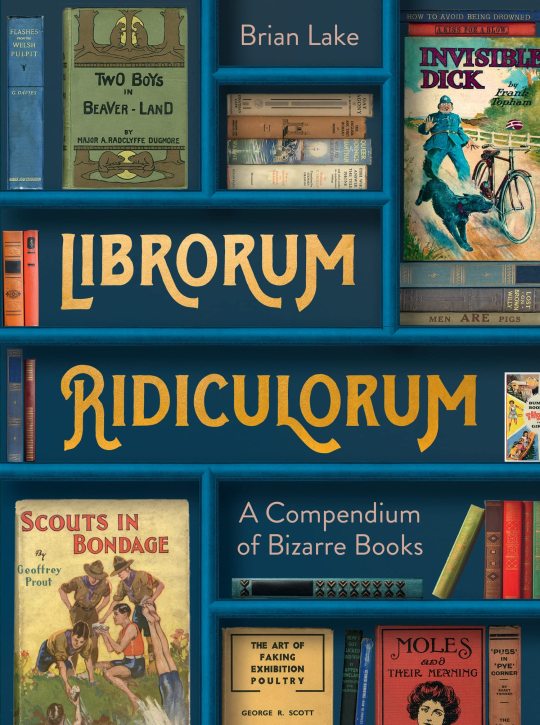
46. Librorum Ridiculorum by Brian Lake. This is a short, cute book of other books, those with weird titles and concepts. Some of them are examples of nominative determinism, like Mathematics for Engineers by Raymond Dull and Sewage Disposal From Isolated Buildings by Gerard Flood. Others are books with titles which have become suggestive over years of linguistic drift, like Drummer Dick’s Discharge or Stormcock in Trouble. If you like dick jokes, you’ll like this book. If you would like more dick jokes for your dollar, though, I suggest Bizarre Books by the same author, of which this is basically a hardcover, color excerpt from.

47. The Doomsday Book by Marshall Brain. This is the How Stuff Works guy, btw. This book, well, doesn’t work. It’s a list of catastrophes that could theoretically fall upon a city, country or planet, a look at the science behind them, and proposed solutions. The book starts strong, with a discussion of how the collapse of the Fort Peck Lake dam could lead to a chain reaction that would flood several major US cities and basically destroy the infrastructure of the American Midwest. And then immediately bungles it with a hysterical chapter about drone warfare, hysterical primarily in its gross overestimation of how competent AI is. This is a recurring theme. So is proposing enormous government overreach as the only way to stop the ever-present threat of terrorism, a fawning attitude towards Elon Musk, and a general sense of using a lot of words to say very little (he splits global warming up, for example, into like three different chapters, so he can re-explain it multiple times). Not recommended.

48. The Book of Phobias and Manias by Kate Summerscale. The organization of the book is from A-Z of the various disorders named, but the book is more interested in using what gets named and interpreted as a lens through which to view the history of psychology and psychiatry. Unsurprisingly, there’s a lot of Freudian analysis discussed, but in a critical light, and a lot of pre-Freudian psychology that I knew very little about and was interested to learn. The book also discusses the use of the words “phobia” and “mania” to discuss other cultural trends, like homophobia, xenophobia and Beatlemania, whether or not they fit the classic definitions (and the debate over the appropriateness of terms like homophobia and xenophobia).

49. The Hidden Company that Trees Keep by James B. Nardi. This is a weird, charming little book about the animals, plants and fungi that live in on and alongside trees. It’s mostly about different groups of arthropods, and of those mostly insects. The organization is overall by regions of the tree (referred to as LeafScape, BarkScape and RootScape), but within each chapter are mostly stream of consciousness discussions about different families of insects. The book is heavily illustrated, which is one of its major charms, and talks about some very obscure insect groups in an approachable manner. The overall feeling is of having a conversation with a distractible but knowledgeable entomologist. It’s probably going to annoy people who are looking for more structure, but I quite enjoyed the ride.
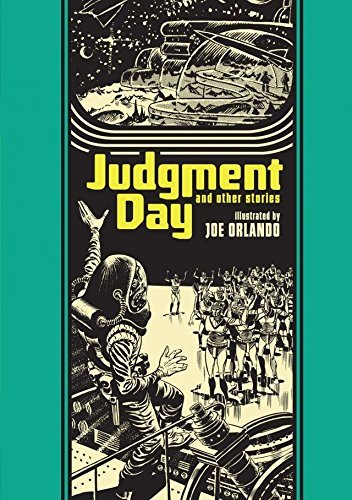
50. Judgment Day and Other Stories illustratedby Joe Orlando. This is one of Fantagraphics many nice hardcover collections of EC Comics stories, all of these science fiction, most from the pages of Weird Science and Weird Fantasy. The title story is a parable about racism that was censored and censured by the Comics Code Authority, and is generally one of the more famous comics of the era. Censorship and bigotry are recurring themes—I especially like the story where “the Reformers” try to introduce crime to Heaven in order to have a way to stoke fear to gain control. EC’s SF comics aren’t as famous as its horror, like Tales from the Crypt, but readers looking for ironic twist endings and gruesome gore will be well served by this collection too.
#reading log#ec comics#joe orlando#entomology#ecology#phobia#mania#psychology#popular science#bizarre books
7 notes
·
View notes
Text
*✧ — JANUARY 2023 WRAP UP

posting this wrap up super late because i can. i am struggling™ and reading is probably one of the only things keeping me afloat right now; consuming any other type of media is currently not working for me. also, i am rereading the hp books for uni and i haven’t read any of them since 2007. i can’t say i absolutely hate them but some things are very icky, and you know, fuck jkr.
2023 goal: 24/100 books
as alway, feel free to drop book recs, questions, or opinions in my inbox; i am always happy to talk to you about books!
* –> newly added to my favorites shelf
follow my goodreads | follow my storygraph | previous wrap ups
–––––––––––––––––––––––––––––––––––
An Elderly Lady is Up to No Good by Helen Trusten | 2.5★ | review
Bastard by Max de Radiguès | 5★
Fried Green Tomatoes at the Whistle Stop Cafe by Fannie Flagg | 3.5★ | review
Not Here to Be Liked by Michelle Quach | 3.75★
The Story of Art without Men by Kate Hessel | 4.5★ | review
I'm the Girl by Courtney Summers | 4.75★ | review
The Waves by Virginia Woolf | 5★ | review
Cursed Bunny by Bora Chung | 4★
The Honeys by Ryan La Sala | 4.75★ | review
On Beauty by Zadie Smith | 4★ | review
Zaïda by Anne Cuneo | 2.25★ | review
Nettle & Bone by T. Kingfisher | 4★
Außer sich by Sasha Marianna Salzmann | no rating | review
We Ride Upon Sticks by Quan Barry | 4.75★ | review
Vladimir by Julia May Jonas | 3.75★ | review
* Alias Grace by Margaret Atwood | 5★
Stancliffe's Hotel by Charlotte Brontë | 4★
The Many Daughters of Afong Moy by Jamie Ford | 3.5★
The Book of Night Women by James Marlon | 4.75★ | review
The Bodyguard by Katherine Center | 3.5★
The Suspicions of Mr. Whicher by Kate Summerscale | 3.75★ | review
Alone With You in the Ether by Olivie Blake | 4.25★ | review
Harry Potter and the Goblet of Fire by J.K. Rowling | no rating
Down Girl: The Logic of Misogyny by Kate Manne | 4.5★
16 notes
·
View notes
Note
fellowwww intp :3
tell me about your fandoms/ obsessions jdjdhdzkskdkd <3
WOOH BOY
OKAY
THIS MAY BE A LONG ONE
Well, I do have the majority of the fandoms I'm in on my pinned post so yeah
AS FOR OBSESSIONS-----
I tend to obsess over a certain amount of my ocs for some time like every few days or weeks and I think about them non stop until the new batch of ocs arrive
along with that I obsess over like a few songs for that amount of time too lmao
I kinda really love random/general/useless knowledge
Like phobias and manias? I LOVE phobias and manias! I have a whole book about em! (The Book of Phobias and Manias by Kate Summerscale, I highly recommend)
And
Um
This may make me sound weird (in a bad way) or whatever but-
Murder?
Like- serial killers, disturbing real life photos? Just generally twisted people?
Specifically over October I began learning and almost researching about some of the most horrible murderers out there like Jeffrey Dahmer, John Wayne Gacy, etc.
So uh yeah
That stuff fascinates me on a daily basis
Oh and Prismo x Scarab from Fionna and Cake
Never watched the show,(don't know where to watch it), but I just think they're neat. And the fanart of them is scrumptious.
Thank you for letting me tell ya about that stuff @holdmyteaplease, feels good to have it off my chest. <3
#not art#asks#talking#If you wanna talk about any of this stuff#SEND AN ASK OR MESSAGE ME!!! >:D#DON'T BE SHY!!!#I KNOW I WILL!!! :'D
5 notes
·
View notes
Text
"THE SUSPICIONS OF MR. WHICHER: THE MURDER AT ROAD HILL HOUSE" (2011) Review
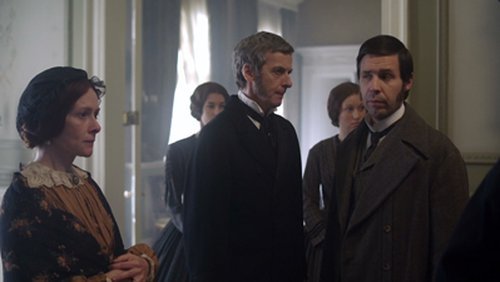
"THE SUSPICIONS OF MR. WHICHER: THE MURDER AT ROAD HILL HOUSE" (2011) Review
Roughly five years ago, a relative of mine had suggested I watch a BBC television movie about a Victorian-era murder story. Although it aired on the Amazon Prime Video streaming channel (and still does to this day), I had assumed it was a documentary. To my surprise, it turned out to be a television movie called "THE SUSPICIONS OF MR. WHICHER: THE MURDER AT ROAD HILL HOUSE".
Before watching the movie, I had quickly discovered that the production was an adaptation of Kate Summerscale's 2008 non-fiction book, "The Suspicions of Mr. Whicher or The Murder at Road Hill House", winner of Britain's Samuel Johnson Prize for Non-Fiction for that year. Hence, the reason why I had initially assumed this was a documentary. The book was an account of the real-life murder of three year-old Francis Saville Kent in 1860 Wiltshire. Francis, the three year-old son of a "Factory Commissioner" for the Home Office named Samuel Saville Kent, was found murdered on the Road Hill House estate in Wiltshire, leased by his father. The child's nursemaid, Elizabeth Gough, had announced his disappearance. Two estate hands eventually found Francis' body inside a privy-house, with knife wounds on his chest and hands, and his throat deeply slashed. Outrage over the brutal murder of a prominent man's child, Scotland Yard had dispatched Detective Inspector Jack Whicher to solve the case.
Whicher's assignment to the case proved to be a godsend for Gough, who immediately fell under the suspicions of Police Superintendent John Foley of nearby Trowbridge. The latter would have pressed for her arrest if Whicher had not cleared her of any further suspicions. However, the Scotland Yard detective's suspicions rested on another member of the household, namely Kent's sixteen year-old daughter, Constance Emily Kent. Whicher also began to suspect Constance's brother, fifteen year-old William Saville Kent. The detective believed Constance (with her brother's help) had sought revenge against their former nanny, Mary Pratt Kent, who had married their father following the death of their mother. There had been suspicions that Kent and his second wife had an affair during his marriage to Constance and William's mother. Since young Francis had been conceived during their father's second marriage, Whicher suspected Constance or both of them of murdering the three year-old boy.
"THE SUSPICIONS OF MR. WHICHER: THE MURDER AT ROAD HILL HOUSE" did not strike me one of the most fascinating murder mysteries I have seen on film or television. This did not surprise me, considering the television movie proved to be more of a fictionalized account of an actual case that had been solved over 160 years ago. I would say "THE MURDER AT ROAD HILL HOUSE" was more of a historical drama or a "true life" crime movie than a murder mystery. After all, it did not take the protagonist very long to produce a believable suspect, halfway into the narrative. The movie eventually became a mental tug-of-war between Whicher and Constance, in which the former struggled to convince the latter to confess to the murder. At the same time, Whicher and his close friend and colleague, Adolphus "Dolly" Williamson, raced to find physical evidence to support his suspicions. Despite their success in discovering hard evidence against Constance, the pair's efforts ended up being stymied or sabotaged by Superintendent Foley, head of the local police. Not only did Foley resented an outsider becoming the lead investigator in the Kent case, he seemed offended that any working-class man would accuse the sixteen year-old daughter of a respectable, middle-class citizen like Samuel Kent, of murder. What made this even worse for Whicher is that many of the locals and the media seemed to share Foley's class bias.
I have to give kudos for the movie's production values. I believe David Roger's production designs really captured the look and style of 1860s Britain. And I believe he did so without being either extravagant or cheap. Roger's work was ably assisted by Jo Kornstein's set decorations, Kate Evenden's art direction and Matt Gray's photography. Lucinda Wright's costume designs managed to perfectly captured Roger's balanced look for the movie's setting. Were her costumes accurate for 1860s Britain? I honestly cannot say so. Regardless of accuracy, I do believe Wright's costumes managed to perfectly captured the essence of the movie's characters across both gender and class.
"THE SUSPICIONS OF MR. WHICHER: THE MURDER AT ROAD HILL HOUSE" featured some solid performances. At least from the supporting cast. Performers like William Beck, Emma Fielding, Kate O'Flynn, Tim Piggott-Smith, Ben Miles, Donald Sumpter, Charlie Hiett, Julian Firth, Sarah Ridgeway and Antony Byrne all gave competent and solid performances. However, I believe a few did give what I consider to be the movie's best performances. Naturally, I felt Paddy Considine was sensational as the solid, yet intelligent Jack Whicher. I thought he did a superb job of conveying Whicher's growing frustration of the impediments that made his investigation to reach a successful conclusion. Equally sensational was Alexandra Roach, who gave an enigmatic and skillful performance as the cool and supercilious Constance Kent. Peter Capaldi's portrayal of Constance's father, Samuel Savill Kent, struck me as surprisingly complex and ambiguous. Capaldi did a great job of conveying hints that the public's suspicions of his character might be justified. I also found myself very impressed by Tom Georgeson's performance as the narrow-minded Superintendent Foley. The actor did an excellent job of portraying his character's class bigotry and resentment toward Whicher's role in the investigation.
As murder mysteries go, "THE SUSPICIONS OF MR. WHICHER: THE MURDER AT ROAD HILL HOUSE" seemed like an ineffectual effort. When the main protagonist manages to discover the true culprit halfway into the production, it seems a waste of time to label the movie as a murder mystery. However, "THE SUSPICIONS OF MR. WHICHER: THE MURDER AT ROAD HILL HOUSE" proved to be a very effective and well-done historical drama about a famous murder case, thanks to a skillful direction from James Hawes, a first-rate adaptation written by Neil McKay and superb performances from a cast led by Paddy Considine. As a fictionalized account of a famous true crime, the television movie proved to be quite fascinating.

#kate summerscale#the suspicions of mr. whicher#the suspicions of mr. whicher: the murder at road house hill#jack whicher#paddy considine#constance kent#alexandra roach#peter capaldi#emma fielding#william beck#tom georgeson#kate o'flynn#true crimes#victorian age#ben miles#charlie hiett#julian firth#tim piggott-smith#period drama#period dramas#costume drama
0 notes
Text
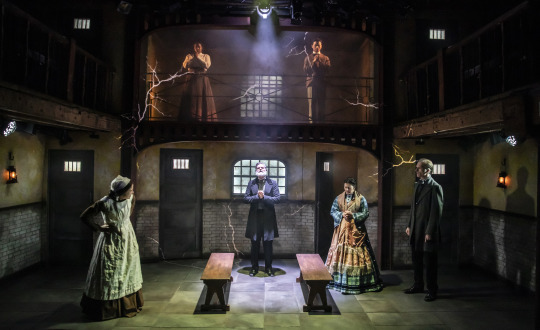



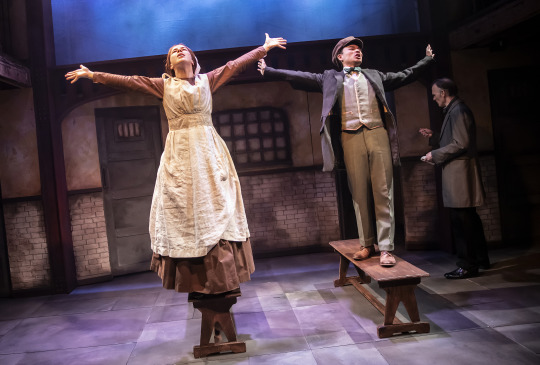

The Suspicions of Mr Whicher, by Kate Summerscale, Adapted by Alexandra Wood.
Produced and Performed at Watermill Theatre, Newbury. May 2023.
Directed by Kate Budgen
Design by Amy Jane Cook
Video Design by Rachel Sampley
Photos by: Pamela Raith
3 notes
·
View notes
Note
9, 10, 17, 18, 19 :D
Have a plate:
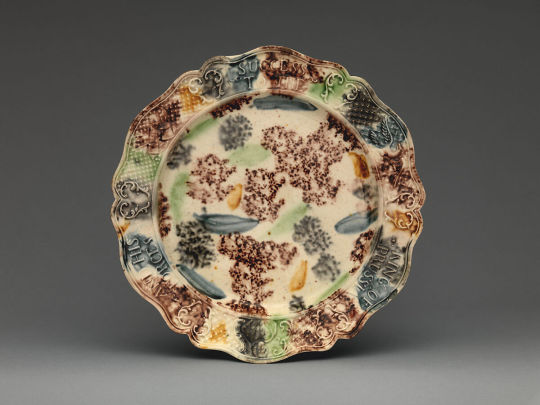
9 - A book that was better than you expected it to be
I go into all books with high hopes, occasionally dashed....maybe "Future Popes of Ireland" by Darragh Martin? I picked it up because the title sounded fun and then it turned out to be a great family story and a really funny satirical sad time capsule of a changing Ireland personally and politically for the three siblings. I really loved that book in the end and there were so many parts that resonated with me, especially honestly the worst sibling who is the spoiled youngest brother and future pope who has gifted kid centre of the world syndrome to the maximum.
10 - A book that didn't live up to your expectations
"This One Sky day", Leone Ross. I am here for magical realism, I am not here for magical realism meaning that magic solves every single plot point Because Magic. Beautiful writing and lots of fascinating ideas but both the deus ex machina and the central love story did not sit right with me
17 - top five books of the year - I answered this but I read enough good books I'm going to reanswer with a new set :
Mavis Gallant, the Cost of Living. Perfect, ironic, satirical short stories in washed up postwar Paris. Funny and wince worthy sad and with the most oblique and accurate possible takes on the politics of the time
The Yield, Tara June Winch. Parallel narratives of a 19th century missionary witnessing the cruelty of Australian policies towards the Aboriginal people and a young woman returning to her family and the mystery of her sisters disappearance. Just so well written and subtle and an amazing example of a book that is a dictionary and a cultural ark and the story of why the cultural ark exists in one.
Get in trouble, Kelly Link. Hella surrealistic and brillaint and spooky short stories. Just pure catnip to me. Read "the specialists hat" online and you will see
This mournable body, Tsitsi Dangarembga. 'Nervous conditions', which this is the sequel to, really changed me, and this book is in some ways such a painful next chapter in the main character's life but so so well realised. You track her every step of the way, even into some terrible places, and you slowly walk out of them with her too.
The haunting of alma fielding, Kate Summerscale. Just a fascinating book albeit with every possible content warning for psychiatric and medical trauma in the interests of parapsychology, oh my GOD.
18 - least favourite book of the year.
I feel bad saying this about any one book! They all tried their hardest. Or tried somewhat. I don't think I read anything truly actively terrible just some books that didn't really get where they were trying to go
19 - best non fiction
I was going to say I'd have to pick a textbook, but I forgot haunting of alma fielding was non fiction! So that one :)
5 notes
·
View notes
Note
5, 6, 7, 8, 11 for the book asks please? 😁
Cheers! :D Sorry for the delay.
5. The longest book you read this year.
That must be the collected ghost stories of E.F. Benson, which clocked in at about 700 pages. Kind of overkill, tbh - there are only so many giant slug monsters one can be expected to take seriously. :P But there are also some real gems in it, too, so it was worth it!
6. The shortest book you read this year.
I think that was The Father Christmas Letters, back at the start of January. <3
7. The oldest book you read this year.
The Mabinogion, by a long shot, whether you take them as wholly medieval literature, or remnants of even more ancient myths.
8. The newest release of the year.
I think that was The Haunting of Alma Fielding, by Kate Summerscale. (October 2020).
11. A book that was most out of your comfort zone.
I can't remember reading anything wildly out of my comfort zone. Maybe Ghost Wall, by Sarah Moss? The blurb gave me slightly wanky, trying-too-hard-to-be-deep-and-literary vibes, but I took a punt on it, because of the mention of bog bodies. It was not a punt that paid off. :\
2 notes
·
View notes
Quote
A séance room was a permissive place -- mystical, tactile, erotically charged -- in which convention often fell away.
Kate Summerscale
3 notes
·
View notes